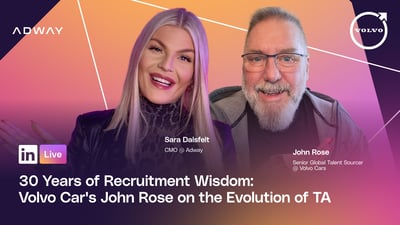327 Billion Reasons Why Indeed is Pivoting to a "full-service recruiting agency."
In case you missed it, Indeed announced they're moving beyond being a job board to a "full-service recruiting agency." This strategic pivot, unveiled at their March Investor meeting, is poised to redefine how we approach talent acquisition.
In addition, they explained their changes to Paid vs. Organic job listings, outlining how they are looking to decrease the number of organic listings throughout. It’s crucial to understand what’s driving Indeed’s transformation and how it impacts you.
Join us in an exclusive video discussion featuring Adway's CMO: Sara Dalsfelt,
Adway's Co-Founder: Viktor Nord, Jim Durbin: The Indeed Whisperer,
Chad Sowash from the Chad and Cheese Podcast, and Lieven Van Nieuwenhuyze from House of HR, as they break down what this shift means for recruiters and employers alike.
Read on for our strategic guide to navigating these changes.
Understanding the Shift
Rumours about Indeeds shift have been swirling for months and our pals, Chad Sowash and Joel Cheesman from the Chad and Cheese podcast scored the scoop back in May, if you missed it, catch up on it here.
Indeed’s Move Towards a "Full-Service Recruiting Agency"
In March 2024, during Recruit Holdings' investor meeting, Indeed unveiled a strategic shift towards becoming a "full-service recruiting agency" or "double-sided marketplace". This transformation signifies a pivotal moment in their business model, aimed at capturing a larger share of the recruitment market. Indeed's CEO, Chris Hyams, emphasized that this evolution from a job search engine to a two-sided marketplace has been in progress since 2011.
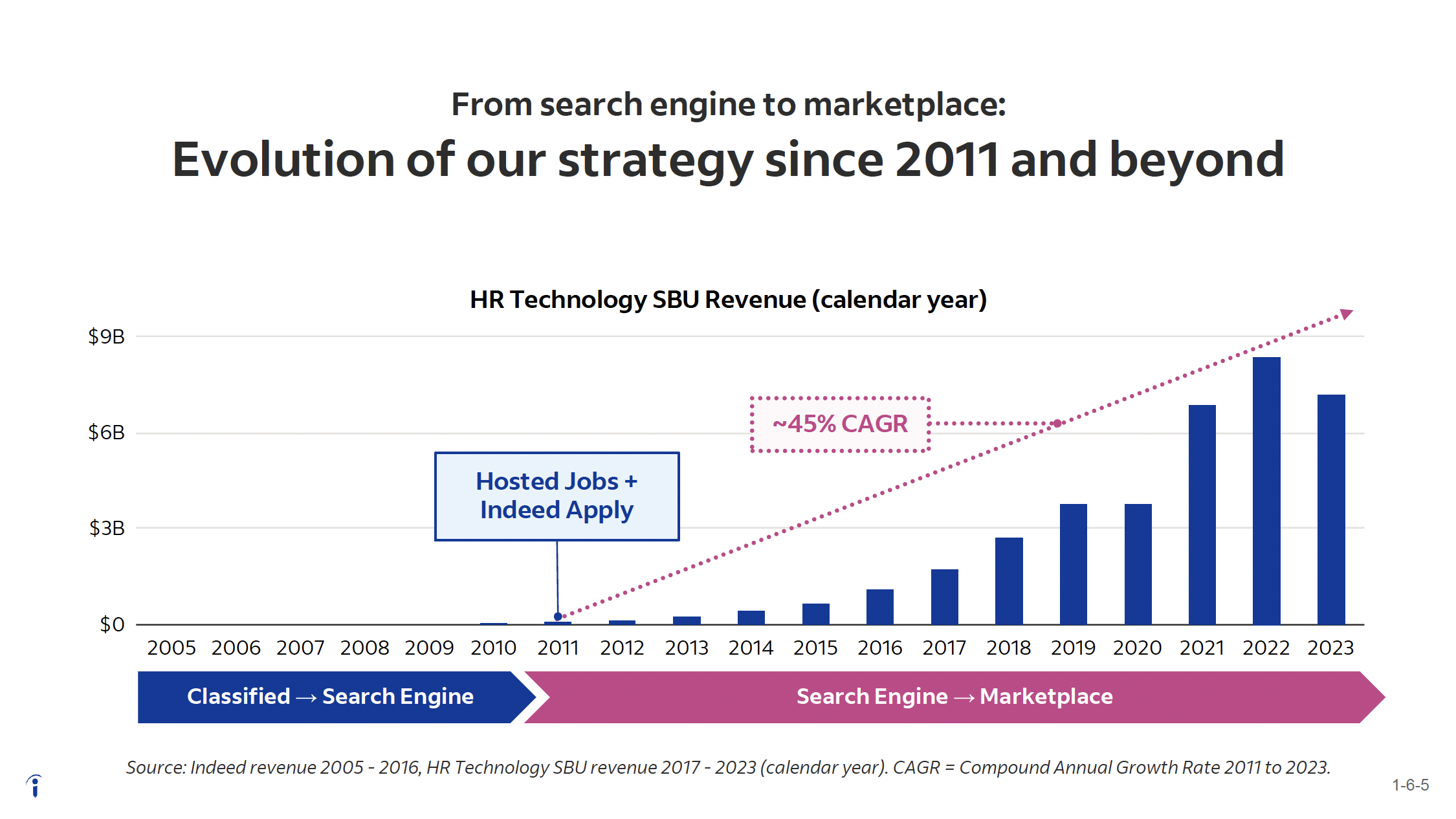
Increased Focus on Paid Job Listings and the "Take Rate"
One of the key aspects of this shift is Indeed's increased focus on paid job listings. Traditionally offering a mix of organic (free) and paid listings, Indeed is now emphasising monetisation through increased paid listings, slowly turning off the tap of organic listings which they claim are less likely to result in a hire. And as Lieven Van Nieuwenhuyze from House of HR points out in his recent interview with Chad Sowash, "...a few months ago, Indeed communicated to us that they would no longer offer organic traffic to the companies from the staffing industry. They will no longer scrape staffing companies. We now have to pay for all our jobs."
He explains in detail how this shift from organic to paid ties into Indeed's now clarified master plan to secure a larger piece of the recruiting pie in this brilliant conversation with Chad Sowash, dive in
here.
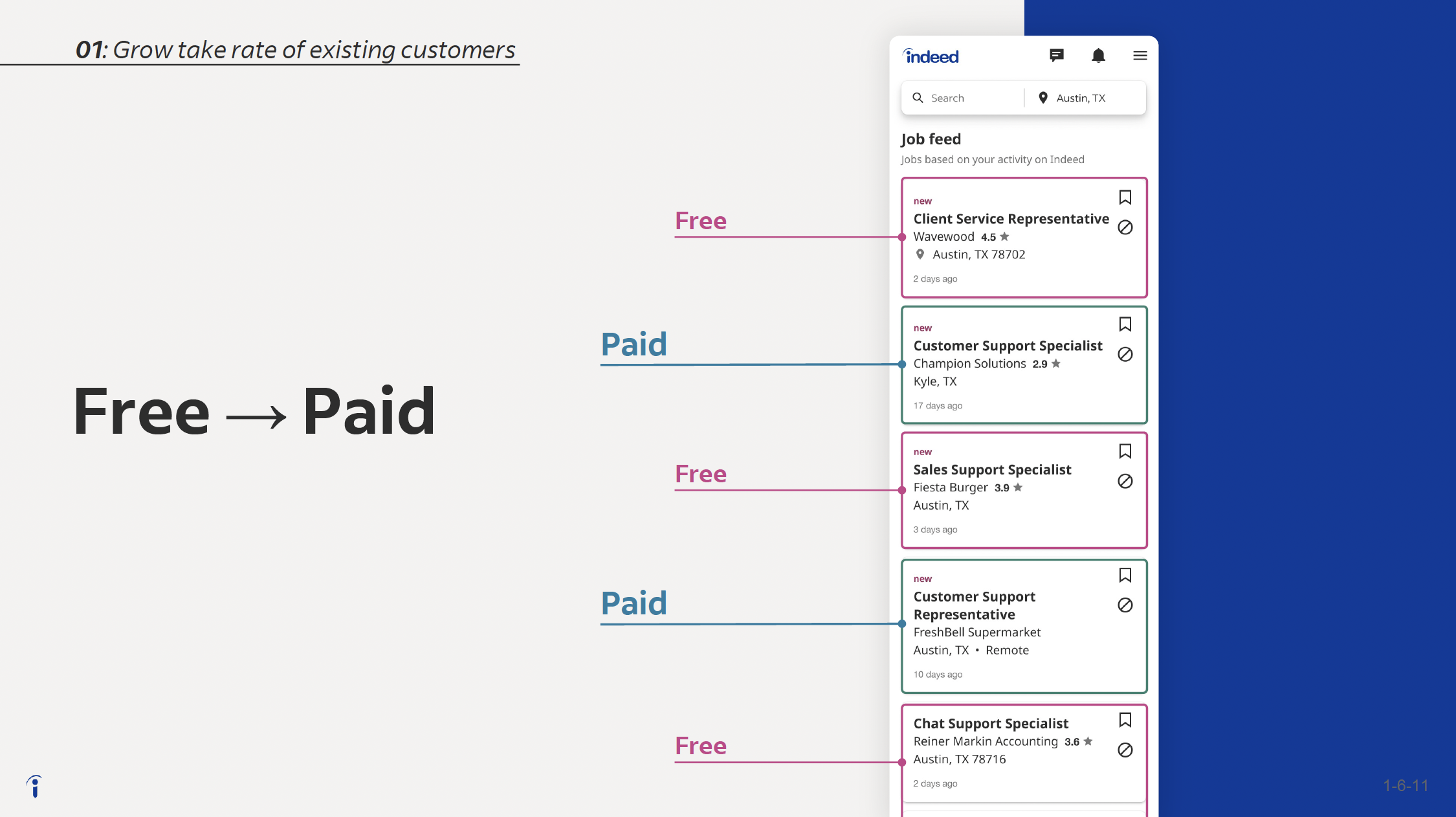
 Stefano Scabbio, former Global Talent Solution Brand Leader
Stefano Scabbio, former Global Talent Solution Brand Leader
at Manpower, highlighted that, "The changes to the organic reach of job ads on Indeed could significantly impact the recruiting and staffing sectors for generalist skills. It will likely lead to recruiters and companies needing to invest more in paid advertising to ensure their job listings are seen."
Central to their strategy is the "take rate," the percentage of a new employee's first-year salary that Indeed earns for each successful hire. Currently, Indeed claim their take rate is less than 1%, much lower than traditional recruitment agencies, who often charge between say 20% to 40%.
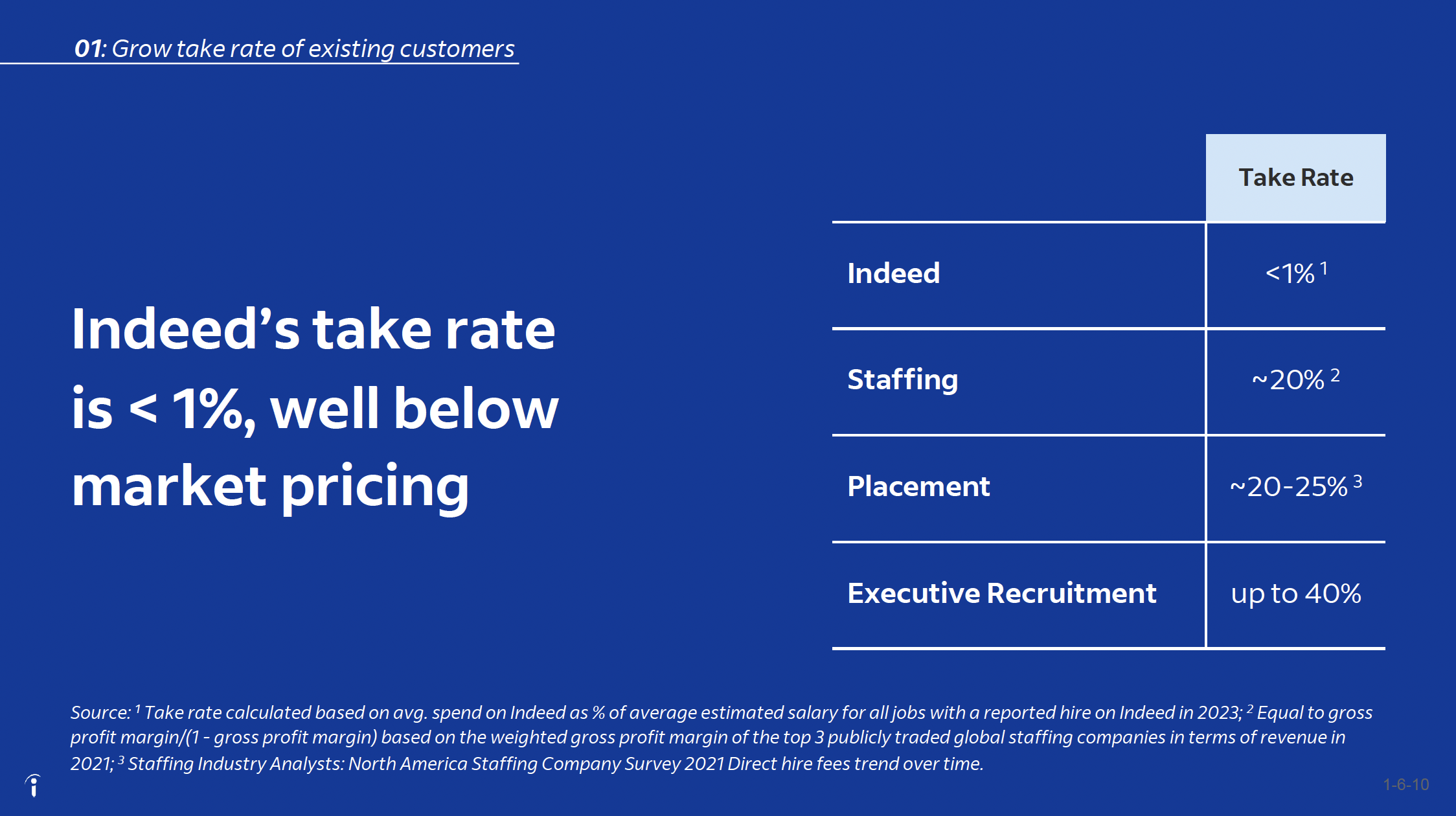
In addition, they see the effective monetisation of high-salary jobs as another critical factor. Typically, the higher the salary, the higher the cost per hire and the take rate. However, Indeed's current model shows the opposite trend—higher salary jobs have a lower take rate compared to lower salary jobs.
This gap represents a significant opportunity to capitalise for Indeed, but for recruiting agencies like House of HR, Lieven puts it succinctly, "...suddenly everything becomes clear. Why did they stop offering free traffic? Why did they stop scraping us? Because they had the cunning plan to become a staffing platform themselves. Every company, every staffing company will have to stop using Indeed because it's like paying your competitor for stealing your candidates and your clients, which will be beyond stupid. And the problem is, of course, Indeed represents up to 50% of our inflow as we speak...But I can imagine other companies being even more dependent on Indeed."
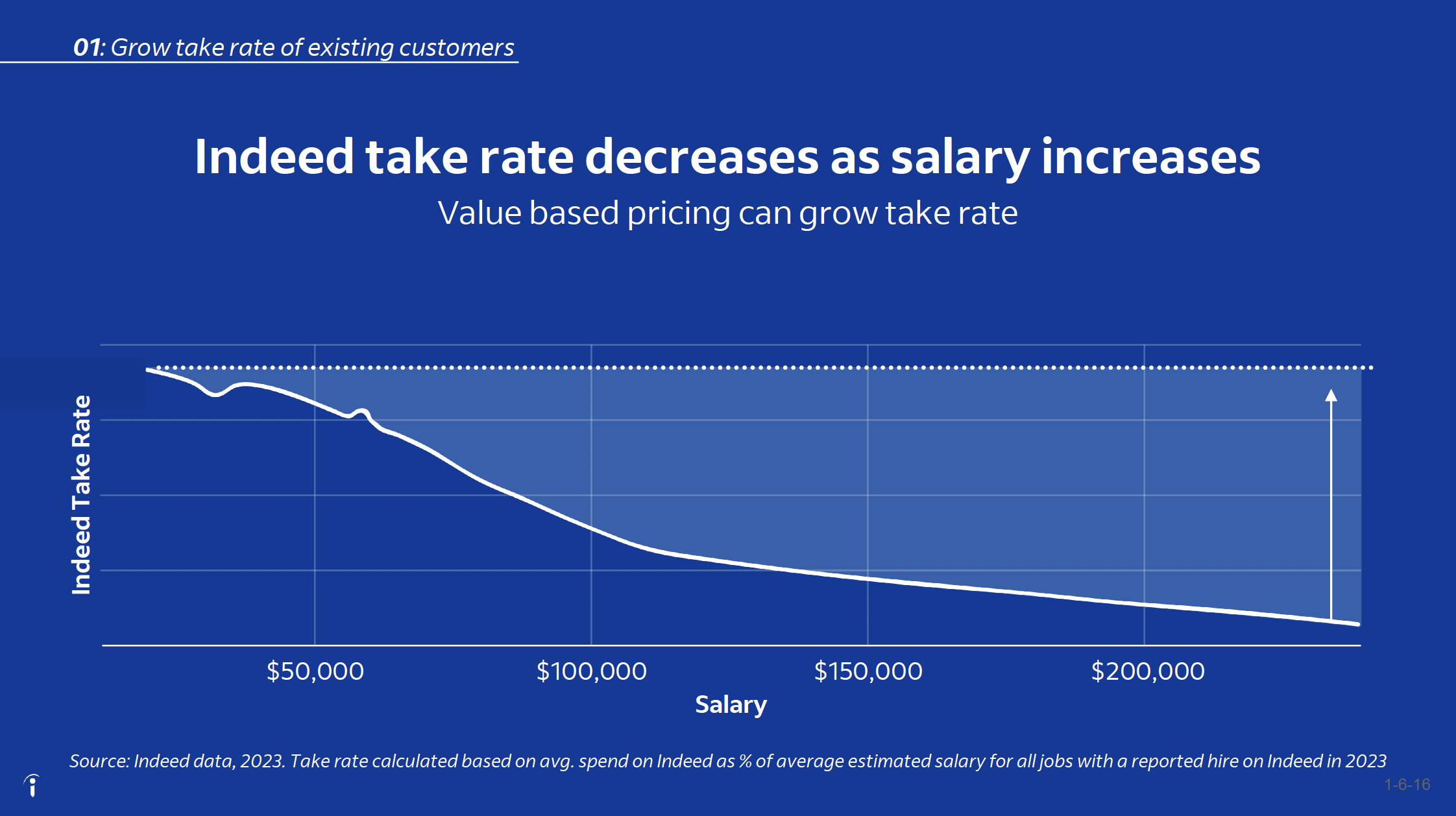
 Tamara Schenk, Global Chief Marketing Officer at
Tamara Schenk, Global Chief Marketing Officer at
Gi Group Holding and renowned recruitment strategist, observes: "I had been expecting this change for a while. Many digital platforms start with a free access model to build a user base and prove the value and then shift to a monetised model. In my past role, I saw that happening in a few countries years back. And yes, there was a significant drop affecting the whole recruitment process, pushing us to adjust and be creative."
The Limitations of Traditional Job Boards
Traditional job boards primarily target active job seekers, overlooking a substantial segment: passive candidates—those not actively job hunting but open to new opportunities. By catering mainly to active job seekers, traditional job boards miss out on these highly skilled and experienced individuals who require enticing opportunities to consider a job change, which traditional job postings often fail to deliver. This focus limits the reach to potential top talent who aren't regularly visiting job boards.
Limited Added Value
Moreover, traditional job boards often add limited value because many candidates they reach are already in a company's recruitment pipeline. This redundancy makes job boards less cost-effective, as employers pay to access candidates they could engage through existing networks.
Understanding these limitations highlights the need for alternative recruitment strategies, such as programmatic social recruitment, to effectively engage both active and passive candidates and maximise talent acquisition efforts.
The Power of Programmatic Social Recruitment
Advantages of Programmatic Social Media Recruitment
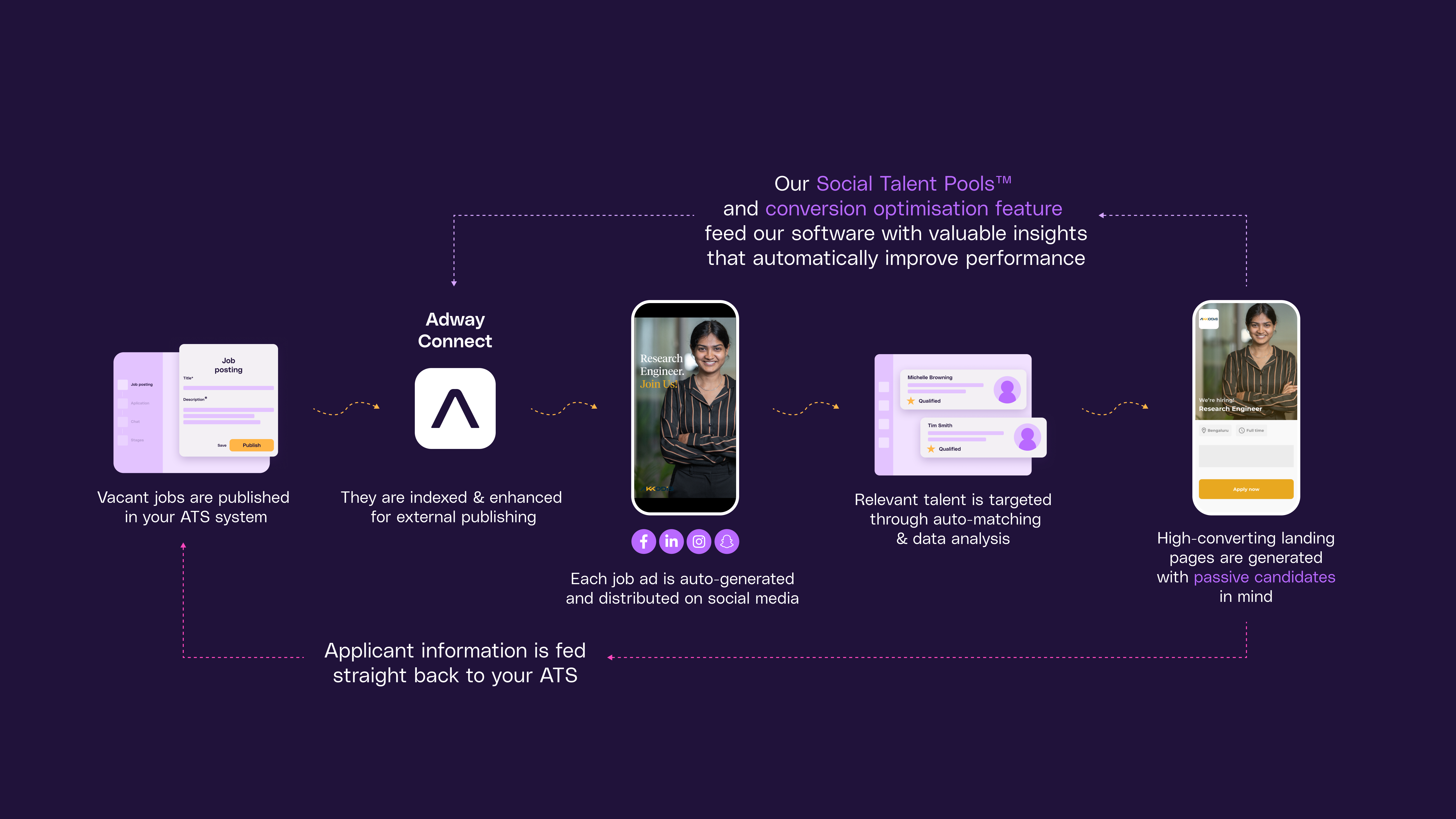
Programmatic social media recruitment like Adway Attract uses advanced algorithms and data-driven approaches to automate and optimize job ad placements. This method increases efficiency, allows precise targeting, and improves ROI by dynamically adjusting ads based on real-time data to maximize engagement and reduce hiring costs.
Stefano noted how "Programmatic social recruitment offers several advantages over traditional job boards and other recruitment channels. It leverages data-driven algorithms to target both active and passive candidates with relevant job opportunities on social media platforms where they already spend time."
Targeting Both Active and Passive Candidates
Unlike traditional job boards, programmatic social recruitment like Adway Attract targets both active and passive candidates. It does this through job-related content and algorithms that analyse millions of historic data points like online behavior, interests, and professional backgrounds amongst others, reaching specific Social Talent Pools™. This approach broadens the talent pool and improves the chances of finding the right fit.
Statistics on Social Media Usage
With over 4.5 billion users and the average person spending over 2.5 hours daily on social media, platforms like LinkedIn, Facebook, and Instagram are ideal for reaching a diverse range of potential candidates. Programmatic social recruitment taps into these platforms to ensure job ads reach both active and passive job seekers effectively.
Tamara emphasises, "Any diversification of your talent strategy is a good thing. Depending on just one or two channels might deliver results in the short term and make the recruitment teams happy now, but it poses a high risk for long-term strategy. That also won’t work when we speak about passive candidates."
Navigating the Changes: A Strategic Guide
Diversify Your Recruitment Channels
- Importance of Not Relying Solely on Job Boards: Depending solely on job boards limits your reach and effectiveness. It focuses mainly on active job seekers and misses out on passive candidates.
- Benefits of a Multi-Channel Approach: Utilizing multiple platforms, including social media, professional networks, and employee referrals, ensures broader reach and resilience against changes in any single channel.
Embrace Programmatic Social Advertising
- Optimizing Recruitment Budgets: Programmatic social advertising automates ad placements, ensuring they reach the right audience at the right time, maximizing the return on investment.
- Improving Applicant Quality: By targeting both active and passive candidates with tailored ads, it enhances the quality of applicants and increases the chances of finding the right fit.
Enhance the Candidate Journey
- Improving the Candidate Experience: Targeted opportunities make the application process more relevant and engaging for candidates, leading to a smoother and more personalized journey from potential candidate to hire.
Invest in Your Employer Brand
- Attracting Passive Candidates: A strong employer brand is crucial in attracting passive candidates. Programmatic social advertising can amplify your brand message across various channels, ensuring it reaches a wider audience.
Analyse and Adapt
- Using Data Analytics: Continuously analyze the effectiveness of your recruitment strategies across different platforms. Use these insights to adapt quickly to market changes and optimize your approach for better results.
Tamara further advises, "Ensure that you have a reliable analytics model that can show you results of end-to-end recruitment funnel. Let the data speak for itself."
Catch Tamara and Sara's LinkedIn Live where they discuss:
The Missing link - Marketing, Talent Attraction and Tech!
Getting Proactive About the Future of Recruitment
The recent changes announced by Indeed highlight a pivotal moment for recruitment strategies. As the landscape evolves, the need for innovative and diversified approaches becomes increasingly critical. Relying solely on traditional job boards is no longer sufficient; companies must leverage advanced technologies and data-driven methods to stay competitive.
Embracing programmatic social recruitment, enhancing the candidate journey, investing in a strong employer brand, and using data analytics are essential steps for effective talent acquisition. These strategies not only broaden the reach to both active and passive candidates but also optimize the recruitment process, ensuring better outcomes and higher ROI.
Shaping Your Talent Acquisition Strategy with Ease
Let's discuss how to diversify your recruitment channels by embracing programmatic social advertising, enhancing the candidate journey, investing in your employer brand, and using data analytics to understand the effectiveness of your recruitment strategies.
Book a chat with the team





 Stefano Scabbio, former
Stefano Scabbio, former 

 Tamara Schenk,
Tamara Schenk, 




